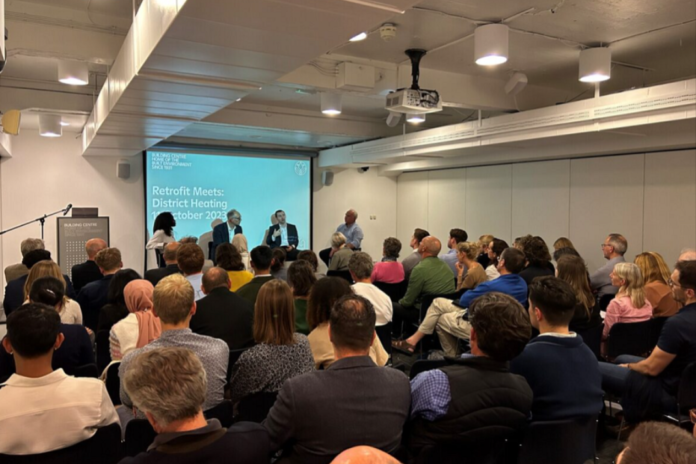
Building professionals attended Rehau’s latest in-person event, Retrofit 23, last week in London. The Retrofit 23 series of panel events explored the deep retrofit of homes at scale, looking at heat networks, a statement has said.
Titled ‘Retrofit Meets: District Heating’, the event discussed retrofitting low-carbon technologies in residential projects, including district heating and heat pumps.
Taking place at The Building Centre, it featured sessions by speakers including Bean Beanland, director of growth and external affairs for the Heat Pump Federation, Simon Eddleston, director of construction at Switch2 Energy and Steve Richmond, head of marketing and technical at Rehau.
Topics covered in the event, which saw 78 attendees overall, included how the new government targets and current installation skills gaps would affect the adoption of district heating technologies.
In all three presentations, the speakers looked to dispel myths surrounding heat networks and what buildings they can be deployed in.
Steve said: “I think the biggest step we as an industry have to take is demonstrating that district heating isn’t an unproven concept, and this event is a key part of this.
“It’s actually the opposite, there are low-carbon schemes going on in the UK all the time, whether that’s fourth-generation or fifth-generation heat networks.
“As demonstrated by the strong turnout to this event, there is a lot of interest in these schemes. It absolutely can be adopted at scale – as I said on the night, we just need to increase the supply chain and get more contractors involved in the sector.
“By doing so, we can help bring costs down further and get more district heating networks installed across the UK.”
‘Retrofit Meets: District Heating’ also showcased research on the residential retrofit challenge, alongside Q&A sessions. Steve stated that the audience’s engagement with and interest in the technology for was “highly encouraging” for the future, especially given the UK’s ongoing decarbonisation efforts.
Steve added: “One of the major points of interest throughout the evening was simply about heat pumps and how they work.
“There can be misconceptions on which buildings they can be used in, and that naturally impacts a second major topic that came up on the night – namely, how we turn fossil fuel district heating networks into low-carbon heat networks. There was a lot of debate on this and how the technology can be rolled out among different types of home, including houses and flats.
“What the event made clear is that the industry is seeing growing interest in the technology, with professionals often asking how to join existing community-led heat networks, and who they need to speak to.
“The reason we hold these sessions is to provide additional clarity in this important area, and I believe we achieved our goal.”
